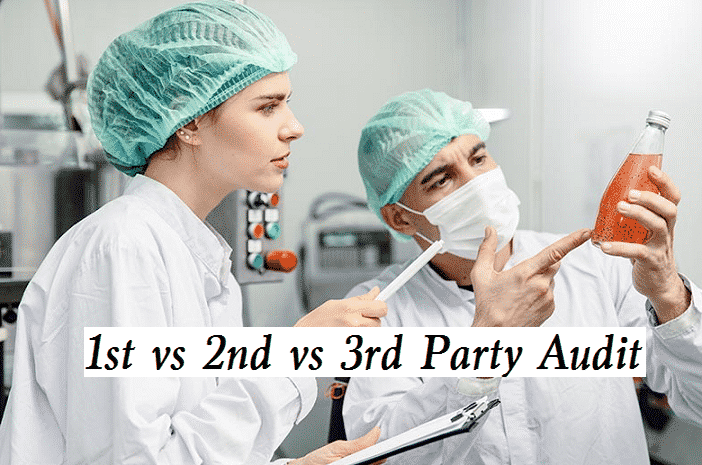There are lots of different categories of audits in environmental management, such as 1st, 2nd, and 3rd party audits. In this article, let’s look at each one of these audits and the difference between the first party, second party, and third party audit.

What is the First-Party Audit?
The first-party audit, also known as an internal audit, is conducted by or in the name of the organization. The object of the audit is the organization’s own management system to verify whether the organization’s management system continues to meet the specified requirements and is running. It provides information for effective management review and corrective and preventive measures. Its purpose is to verify whether the operation of the organization’s management system is effective, which can be used as the basis for the organization’s self Qualification Statement. In many cases, especially in small organizations, it can be conducted by personnel who have no responsibility for the audited activities to prove independence.
What is the Second-Party Audit?
The second party audit is the supplier audit by the customer. The audit results are usually the most important basis for customers’ purchase decisions. During the second-party audit, the influence of purchased products on the quality or use of final products shall be considered first, and then the audit method and scope shall be determined. Factors such as technology and production capacity, price, timeliness of delivery, and service shall also be considered.
What is the Third-Party Audit?
The audit of an organization by a third party is usually also called an external audit. The organization shall be audited by an organization with third-party certification, and the certificate can be issued after passing the audit. The audit of the third-party quality management system is mainly divided into two stages. The first stage is the review of quality management system documents. The second stage is the review of the conformity of actual operation with specific requirements (laws and regulations, manuals, and quality management system standards). The third-party audit is usually a means of certification.
Difference between First-party, Second-party, and Third-party Audits? – 1st vs 2nd vs 3rd Party Audit
1) The purpose of the audit is different
The first-party audit is conducted for self-examination and self-improvement, which is commonly referred to as an internal audit.
The second-party audit is conducted to review the qualification of the supplier.
The third-party audit is to check the conformity of the audited Party’s documents.
2) The audit scope is different
The scope of the first-party audit shall be determined by the auditor and may include the process, place, and department related to the purchased products.
The typical way of a second-party audit is that ISO9001 quality management system standard is included in the supply chain.
The scope of the third-party audit includes the audit status of the organization by external institutions and customers, the achievement of management objectives of various constituent departments, process performance reflection and product compliance evaluation, the effectiveness of corrective measures and improvement measures, and the evaluation of various resource allocation.
3) The audit focus is different
The implementation of the second-party internal audit focuses on verifying the conformity of activities and relevant results, determining the effectiveness of the quality management system, the reliability of the process and the applicability of products, evaluating the degree of achieving the expected purpose, and confirming the opportunities and measures for quality improvement (including correction and prevention).
The focus of the third-party audit is to prove that the organization’s QMS meets the requirements of ISO 9001:2000 international standard or other standards. When the certification is qualified, register and issue the corresponding certificate.
4) Different audit consignor
The first-party audit is the organization’s own audit.
The second-party audit is mainly the user audit organization.
The third-party audit is mainly an independent third-party audit organization.
There are some other situations. For example, the organization invites the third party to conduct an internal audit on the organization, which is actually classified as the first party audit; The user arranges an independent third party to audit the enterprise, which is classified as a second-party audit. Because the distinction here mainly depends on who the audit entrusting party is. The third-party audit is mainly conducted by the enterprise in order to obtain the corresponding third-party certificate. The audit entrusting party is a third-party organization, such as ISO 9001 certification.